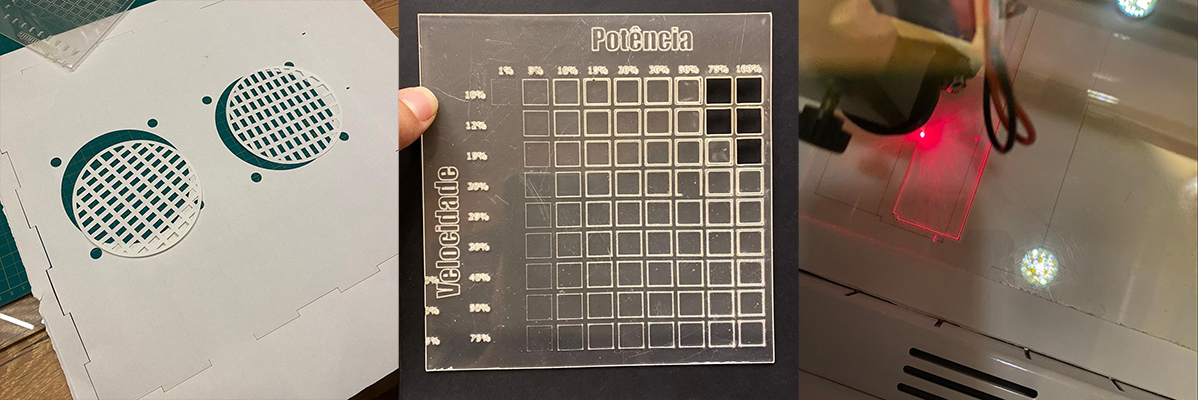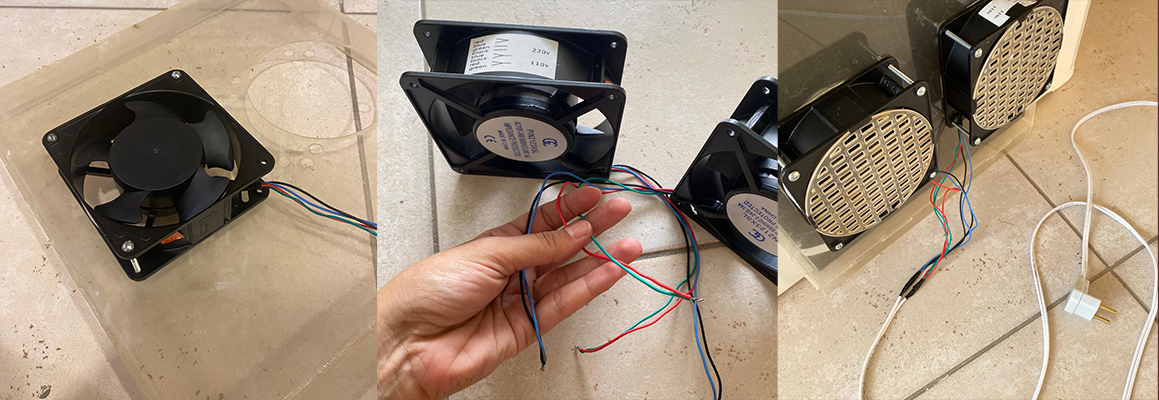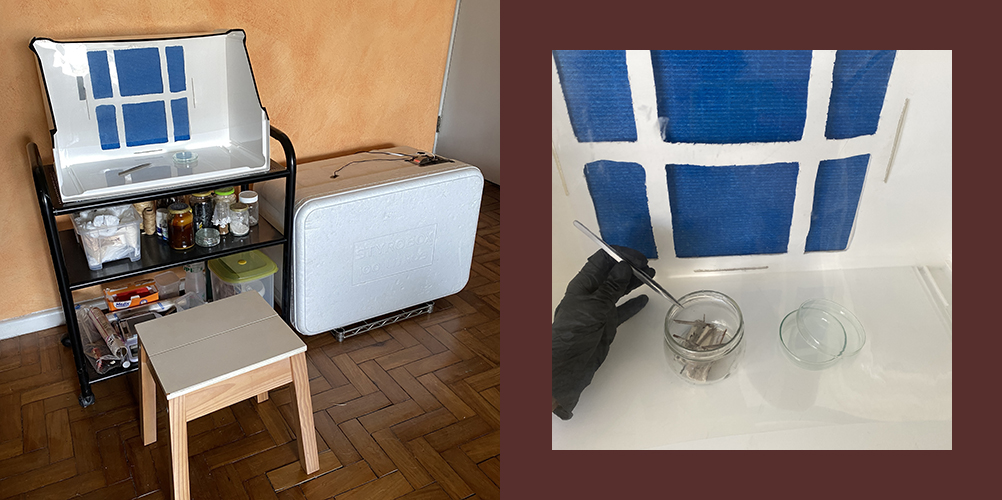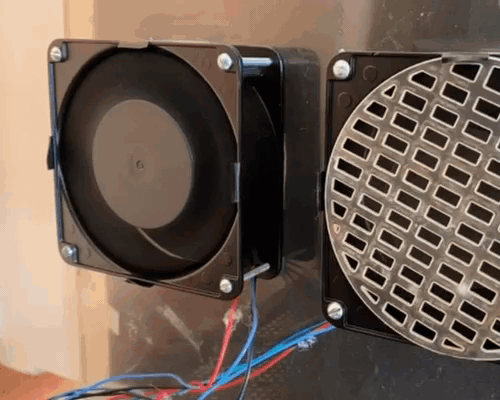10. Open Source Hardware¶
For this assignment I decided to make something that would be useful for me in my current projects - that are very much related to design and biology. As I already have a homemade incubator, what would best fit to complement my home-lab would be a Laminar flow hood.
A Laminar flow hood is a device used in laboratories and medical facilities to create a sterile and controlled environment. It blows filtered air in a smooth, unidirectional flow, minimizing airborne contaminants. It is often used to protect samples, equipment, and personnel from contamination.
 References on DiY Laminar flows
References on DiY Laminar flows
These are some video tutorials that I watched to study how does a laminar flow works and what is the best model for my needs:
Materials¶
| Qty | Description | Price | Link |
|---|---|---|---|
| 1 | Plastic box 65L | 98 R$ / 17,60 EU | Leroy Merlin |
| 1 | HEPA Filter H13 | 131 R$ / 23,50 EU | Mercado livre |
| 2 | Microfan | 46 R$ / 8,30 EU | Mercado Livre |
| 1 | Selant (silicon) | 18 R$ / 3,20 EU | Leroy Merlin |
| 1 | Acetate | 12 R$ / 2,15 EU | Caçula |
| 1 | Acrilic or other | found/leftovers |
Total price: 305 R$ / 54,75 EU
Materials details:¶
Plastic Box - Dimensions: 30,7cm x 63,5cm x 42,5cm - Volume: 65L - Material: Polypropylene (PP)
Fan - Dimensions: 120X120X38mm - Voltage: 110V / 220V - Current: 024A - 100V / 014A - 220V - Frequency: 50/60HZ - Air flow 42,5 / 47,2l/s - Air flow rate: 169,90m3/h - Velocity: 2700 / 3000 RPM
Filter - HEPA filter H13 class. Hospital standards to purify the air. Guaranteed retention of 99.97% of the 0.3 micron particles.
Process¶
The first step was to laser cut the acrilyc for making the protection box for the filter and fan. I made the file in Rhino and lasercuted it in Ellora Atelier. First we tested on paper and then we cutted a tester to choose the best speed and power.
 Drawing for laser cutting
Drawing for laser cutting
 Laser cutting process
Laser cutting process
The next step was to cut the plastic box. It was harder then I tought. The best method was with a serrated knife. I added the acetate visor gluing it and then adding sealant tape.
 Cutting the plastic box (hardest part)
Cutting the plastic box (hardest part)
After laser cutting the acrilyc and cutting the box, I glued the filter in the box with silicon tape and then glued the protection box with the silicon sealant. The eletronic part was simple, just conect the two fans (red and green with red and green / black and blue with black and blue) extend the wires and add an energy plug. For turning it on, you just need to plug in the socket.
 Appling the HEPA filter
Appling the HEPA filter
 Instaling the fan
Instaling the fan
 Finalizing the assemblage
Finalizing the assemblage
 Final result
Final result

Conclusion¶
In the final tests, I realized that the air flow was not as strong as it should be to go through the HEPA filter. I would change the fan for a more powerful one, and place the filter before the fan in the protection box, so that the air would be pushed through the filter and not pulled through the filter.
Fabrication files¶
File: protection box (laser cut)